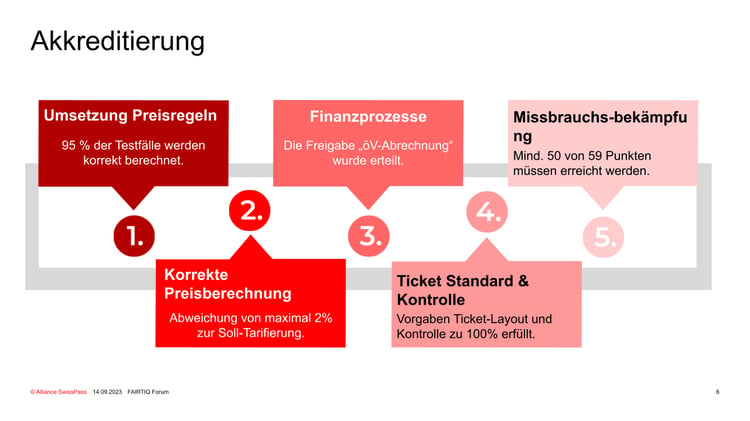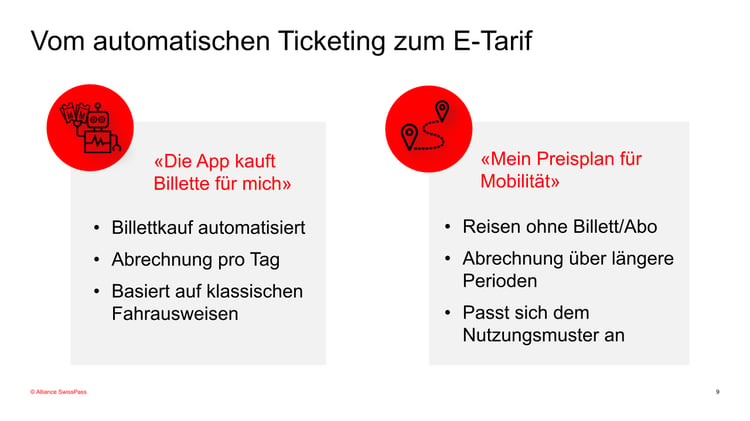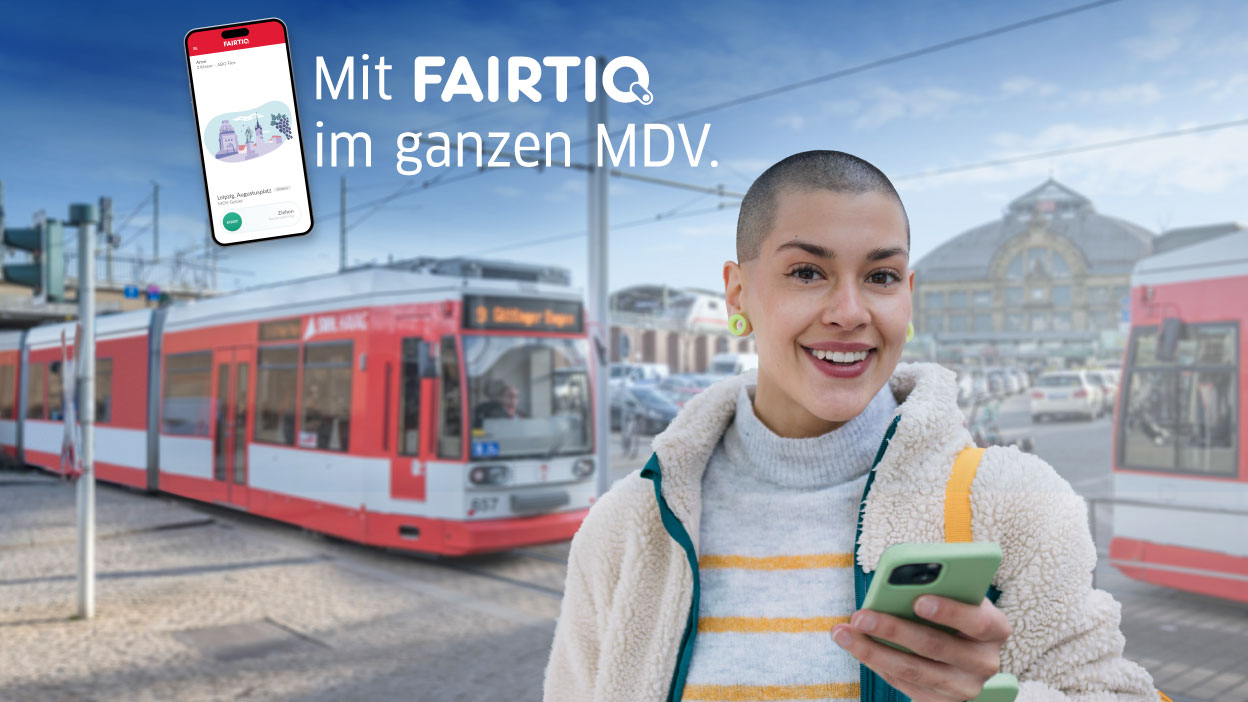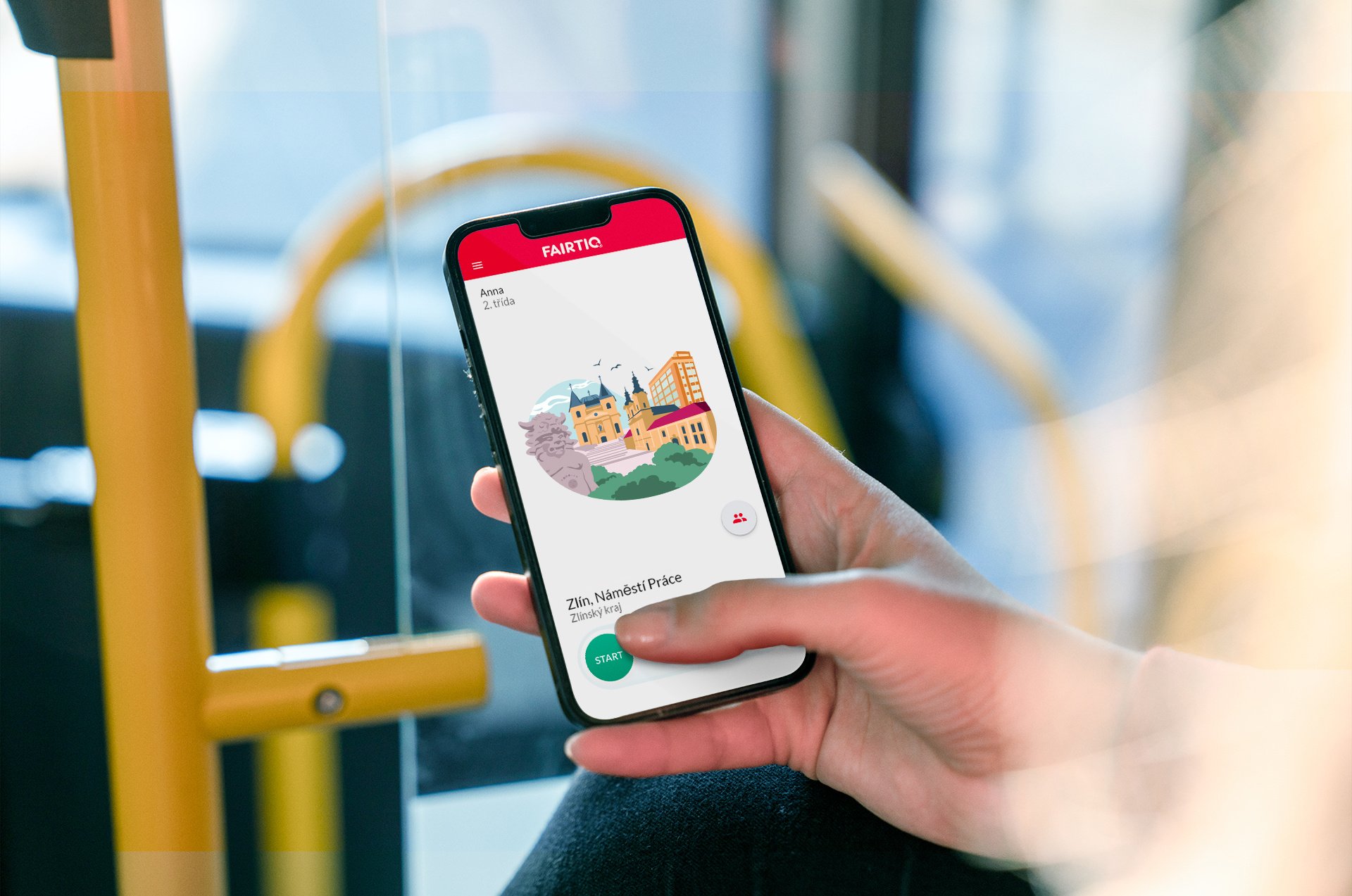
“Always the same! Or is it always different?” was the theme for this year’s FAIRTIQ Forum. The online conference took place on 14 September 2023. Leading experts from the transport sector discussed how sales and ticketing in public transport are evolving in different regions of Europe.
Mobile In-out ticketing on public transport is becoming established as an additional sales channel – with increasing usage figures. The app-based check-in/check-out and Pay-As-You-Go (PAYG) solution from the Swiss start-up FAIRTIQ is already being used successfully in many regions of Europe. At the beginning of this year’s FAIRTIQ Forum, Gian-Mattia Schucan, founder and co-CEO of the technology company reported that over 120 million public transport journeys have already been made using it.
At the online conference, more than 180 representatives of public transport companies and transport associations from Switzerland and other European countries discussed the diverse approaches and technologies simplifying sales and ticketing in European public transport. Keynote speeches and practical examples showed the various ways in which seamless and contactless travel is becoming the “new normal” – through automatic ticketing (PAYG), post-pricing and flat rates.
The transformation to sustainable mobility requires strong B2B partnerships
Keynote speaker Olga Nevska kicked off the conference with her remark that “digital technological innovations for sustainable and connected mobility are key to changes in transportation”. The CEO of Telekom MobilitySolutions shared her experiences with converting one of Germany’s largest corporate fleets into an innovative mobility provider. Demand-oriented and shared mobility services can only have a high societal impact if they are easily accessible and affordable and ensure that data is handled securely. To achieve this, transport providers must consider mobility as a holistic ecosystem. Partnerships with public transport companies or transport associations play a crucial role – “nobody can go it alone”, she explained.
The diverse application areas of in-out ticketing
Three practical examples from Switzerland and France showed how versatile and effective the use of in-out ticketing can be. Various implementers had their say and outlined the diverse possible uses of in-out ticketing. These examples below gave participants valuable insights into the different contexts in which in-out ticketing can be used:
Mobility as a service: the example of Roche
Nico Misselwitz, Head of FM&RE (facility management & real estate) – Digital Customer Experience & Mobility at the Swiss pharmaceutical company Roche Diagnostics, showed how companies can specifically promote the switch to public transport to make commutes as sustainable as possible. The expert observed how “our working world has changed significantly. This also affects the mobility needs of many commuters”. There is a growing number of employees at the Red Cross location in the canton of Zug and a limited number of parking spaces. “With Mobility Ambitions 2035+ we have, therefore, developed a roadmap to make commutes even more flexible, individual and target group-oriented,” Misselwitz explained.
.png?width=750&height=422&name=roche-presentation-forum%20(1).png)
A significant lever is comparing travel times with public transport and by car. The travel time gap is the basis for staggered parking pricing models. Those without a parking permit or those who do not use theirs will receive a mobility bonus. In the future, the concept will be converted into a mobility budget or a purpose-bound bonus model. “So that employees use public transport more, we also rely on the platform idea,” continued Misselwitz. FAIRTIQ is a strong partner for this. “In the future, for example, we will be able to technically implement incentive models or combine home office models with flexible best prices.”
Plus equals zero, plus equals minus, plus equals flex: the example of the French region of Occitanie.
A case study from the French region of Occitanie showed that a flexible tariff product makes public transport more attractive. The transport provider developed a tariff model in 2021 specifically for the 18 to 26 year old age group based on a loyalty programme – the more you travel, the more you travel for free (“+ = 0”). You pay half price for the first ten trips, and from the eleventh trip onwards you travel free of charge. If you travel even more, you will also earn free rides as mobility credit up to your thirtieth ride.
“We have now successfully developed this offer for additional age groups and made it more innovative,” commented Valérie Ossant, sales representative of liO Train serving the region of Occitanie. For senior citizens, a progressive reduction applies, so those who travel more pay less (“+ = -”). Anyone between 27 and 59 years old travels according to the same model, with a capping effect from the twentieth trip (“+ = Flex”). The age range is to be further expanded in the future, and an expansion from IiO trains to regional buses is also planned.
.png?width=750&height=422&name=sncf-presentation-forum-1%20(1).png)
“With the tariff introduced in August, we saw increasing passenger numbers within a few weeks,” reported Daniel Aubaret, head of marketing at SNCF Voyageurs Occitanie. With the youth tariff, 75,000 new customers were acquired and 1.8 million more trips were achieved. “The new tariffs are clearly a new way of retaining customers by offering more freedom and more flexibility,” said Aubaret.
Data security and control in automatic ticketing: the example of Alliance SwissPass
The Swiss public transport industry organisation Alliance SwissPass is also pleased about increasing sales figures for digital channels. “As of September 2023, around 77 per cent of sales are currently made via digital channels,” reported Bruno Lehmann. In automatic ticketing (PAYG) alone, the proportion of day tickets last year was over ten per cent while single tickets amounted to over eight per cent. This makes technical reliability all the more important – particularly when it comes to correct data collection and price calculation. “The FAIRTIQ technology works very well here,” commented Lehmann.
There are 19 different tariff systems within the Swiss public transport system, to which 52 transport companies and ten transport associations are connected, a correct distribution of the revenue generated via automatic ticketing (PAYG) is essential. Work is being done on the enhancement of the distribution of the revenues. One approach is to utilise beacons on buses and trains to record routes precisely for each vehicle in order to improve the accuracy of the allocation of journeys to the respective transport company - for example, when two different providers travel on the same route at the same time.
In the future, this could also simplify the distribution of revenue from flat rates such as with the Swiss Generalabonnement travel card, which is currently done manually via user surveys and travel diaries.

The accreditation standards for data security also include the definition of ticket layouts for ticket inspection and a catalogue of criteria for combating misuse. “For example, we check whether recorded trips and checked tickets match or whether checked-in and checked-out trips actually took place,” explained Lehmann. “This is where FAIRTIQ scores highly”.
How will in-out (PAYG) ticketing become the new normal? The myRIDE project
In addition to high data quality and security, radical simplicity is the best way to attract more passengers to public transport and increase the modal share of public transport, according to the second keynote speaker Andreas Fuhrer from Alliance SwissPass. The public transport industry organisation is currently developing and testing new forms of ticket and pricing as part of the myRIDE project. With the post-pricing approach, only the distances actually travelled are charged. This makes it possible to optimise or, for example, cap travel costs based on usage behaviour.

The project manager made it clear that they “are not replacing anything, but rather creating a new, digital, customer-oriented and barrier-free alternative to the existing classic options”. For this kind of e-tariff to be a success, high price transparency, guaranteed anonymity for travellers, uncomplicated onboarding/offboarding and easy accessibility are required.
Opportunities and obstacles on the way to the new normal: panel discussion
This year’s panel discussion, moderated by Paula Ruoff, FAIRTIQ Lead for Germany and Austria, was dedicated to the future of sales and the role of automatic ticketing. The potential offered by flat rates was also discussed using the example of the KlimaTicket in Austria. With up to 10,000 new customers per month and over 90 per cent extending for another year, this ticket option has been well received, reported Jakob Lambert, CEO of One Mobility. Degressive models like this offer attractive price alternatives, particularly for frequent travellers and commuters.
In addition, the examples of Switzerland and the Deutschlandticket, show that flat rates have a high integrating effect on the public transport industry. In the words of Lambert, “we all have to pull together”.
Whether these solutions can become established in the long term is ultimately a question of political direction, according to Gian-Mattia Schucan, founder and co-CEO of FAIRTIQ. Flat rates could make a big difference in the short term. “In the long term, however, it takes creativity to simply try out and test new ideas and to access untapped potential – for example, in the area of price plans.”
Check-in/check-out solutions could feature, in a tariff structure, between a flat rate option for frequent travellers and savings tickets for occasional customers, to ensure continued gains for public transport in the modal share. The panellists agreed on this. Ultimately, what matters is the overall customer experience – travel should be easy and fair. “The feasibility of combined travel chains for seamless travel will become increasingly important in the future,” said Andreas Fuhrer from Alliance SwissPass. Ultimately, making public transport accessible is essential.
So, what is the new normal in ticketing?
Overall, the FAIRTIQ Forum 2023 showed that an integrated, customer-oriented and technologically innovative approach is the key to shaping the “new normal” in ticketing and public transport. Speakers, panellists and participants of the forum agreed that modal shift to sustainable mobility succeeds when public transport travel becomes "radically simple". Co-CEOs Anne Mellano and Gian-Mattia Schucan agree: “with committed partnerships and progressive solutions, we can look forward to a promising future for public transport.”








Share